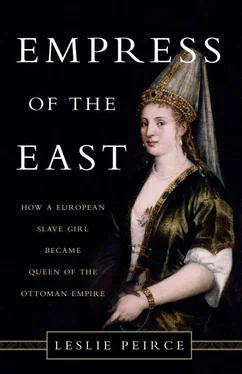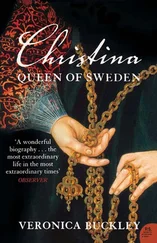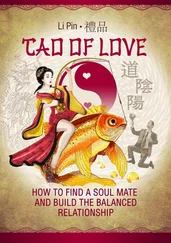One can only imagine Roxelana’s own musings as her carriage made its way past the edifice that had been forcibly converted from Christianity to Islam, as she herself had been. She probably had only a vague grasp of the glories of Byzantium, but as a young child she had doubtless heard tell of the tragic fall of the Constantinople Patriarchate into the hands of the infidel Turks. It stood to the Eastern Orthodox Christian Church, the heart of her family’s faith, as the Vatican stood to the Roman Catholic Church. But rather than destroy the greatest symbol of Byzantium’s Christian faith, Mehmed and his successors kept Hagia Sophia as the premier mosque of the Ottomans, the greatest symbol of the empire’s Muslim faith. (Turkish still calls it Aya Sofya.) As Angiolello put it, “The Turks have chosen [it] for their cathedral, and they worship there according to their laws.” [28] Angiolello, Historia .
There was nothing especially Ottoman in this reverence for sacralized space: the first great mosque built by a Muslim monarch, the Umayyad mosque of Damascus, lay atop a succession of former houses of worship—an ancient Aramaic temple dedicated to the god Hadad, a Roman temple to Jupiter, and lastly a cathedral to St. John.
The first courtyard of the New Palace (later Topkapı Palace). Janissaries guard the outer entrance; Hagia Eirene is to the left immediately inside the gate, and the Middle Gate is at the top right. Seyyid Lokman, Hünernâme .
This much history Roxelana did not know, at least not at that early moment in her career. But during the considerable time it took to circumnavigate Hagia Sophia, perhaps she reflected on the sights she had just seen. She probably recognized that three of the four Ottoman endowments she had passed were sponsored by converts like herself (for one thing, their scale was obviously smaller than that of Bayezid’s mosque). Living in the Old Palace, she learned that the most successful graduates of imperial training were expected to endow a mosque and, funds permitting, additional public service institutions. Hafsa’s own big project under construction in Manisa demonstrated that gender was no bar to this expectation. Did Roxelana already have a glimmer of what she herself might undertake if her encounter with Suleyman turned out successfully?
The great basilica-mosque may have consumed the whole of Roxelana’s attention, but if she shifted her gaze to the right, she would see the old Byzantine Hippodrome. The surviving fragments of its coliseum-like grandstands were perhaps too distant to see from the carriage. But she could glimpse three monuments that still stood at its center, two of them ancient: an Egyptian obelisk, a bronze serpent column from Delphi, and a Byzantine obelisk. This vast open space, whose name the Ottomans retained—the square of the horses—would soon begin to function as the main arena for public spectacles and celebrations sponsored by the dynasty. Later in her life, Roxelana would watch the festivities from the enclosed balcony of a new mansion that would soon go up on the Hippodrome square, Suleyman’s gift to his grand vizier Ibrahim Pasha.
Finally, as Roxelana and her escort moved beyond Hagia Sophia, they would arrive at the great outer walls of the New Palace. As the carriage passed through the gatehouse arch, guarded by members of the Janissary infantry corps, there appeared Hagia Eirene, former Church of Holy Peace. Now incorporated into the first public courtyard of the New Palace precincts, it served the Janissaries as an arsenal. The imposing “Middle Gate,” entrance to the palace proper, stood only a few minutes away.
4
THE POLITICS OF MOTHERHOOD
ROXELANA WAS WELL prepared for her presentation to Suleyman. A royal concubine had more than the usual coaching of a virgin on the eve of her first sexual experience, for not offending her master was crucial for her survival. Rehearsing her introduction to the sultan was perhaps the final piece of a first-time concubine’s training. Roxelana would learn the protocols for approaching him and the formulas for addressing him when it was time to do so. Memorizing the right words may have been a reassuring exercise, especially if her Turkish was still hesitant.
It would fall to Roxelana alone, however, to master any conflicting emotions she felt about the coming encounter. She recognized that to be chosen was an honor, the ultimate measure of her success. She also understood that by stimulating the sultan’s desire and holding onto it long enough to become pregnant she could ensure her future security among the Ottomans. But that did not necessarily mean that the young woman welcomed the prospect of sexual thralldom to the ruler of the empire that had made her a slave.
In the Hall of the Maidens, Roxelana would be washed and dressed. If she had a patron in the Old Palace, a modestly alluring gown may have been provided for her. A small retinue of eunuchs would lead her to Suleyman’s private quarters. As she approached the Privy Chamber, eyes downcast, Roxelana would encounter the privileged male slaves who guarded its threshold. Her retinue would protect her from distraction, keeping her focused on the man she was about to be alone with.
WHEN SULEYMAN GAVE the order to summon Roxelana to his bed chamber, he was no stranger to initiating a virgin slave into her role as concubine. He had had his own harem from the time he was seventeen or so, when he was serving in Caffa. It was not large, though, as befitted Suleyman’s status as an apprentice governor. An expense register from 1511, a year before his first son Mahmud was born, lists ten female slaves, while a later, undated one from the prince’s time in Manisa, a more significant post, listed seventeen. [1] BOA, D 8030.
Not all of these women were his bedmates.
What did Suleyman expect from his encounter with Roxelana? He was not duty bound to make the new girl a mother, though he probably hoped for a satisfying night with her. If he found her wanting, he could dismiss her after a polite reception. Even so, Suleyman came to this meeting prepared. He was head of the dynastic family, after all, and the new concubine could conceivably become an important part of it. He would know something of her—her Ottoman name, Hurrem, and where she came from. He may well have spoken a bit of her language, especially if his mother Hafsa had come from the same region.
Sex for males of the Ottoman sultanate, as for any scion of a hereditary dynasty, was not always pleasure driven, for it was laden with political consequence. European fantasies about the libertine sensuality of Ottoman sultans were misplaced, at least with regard to Suleyman. The pressure to perform—to produce heirs to the throne—was inescapable. As his father Selim’s only surviving son, Suleyman’s task, as soon as he matured, was to provide children to perpetuate the dynastic line. But by the time he called for Roxelana, he had done his duty. He could afford to indulge himself—he had only one daughter, but he was the father of three sons. If Suleyman was pleased with his new choice, he would call her back. If she became pregnant, so much the better. Another son was dynastic insurance, and another daughter a delight.
Whatever transpired that first night in the royal bedroom, Roxelana must have acquitted herself well. She conceived sometime within five months of Suleyman’s accession to the throne. (The timing of her pregnancy depends on the child’s birth date, for which only the year is recorded: 927 in the Islamic calendar, which ended on November 30, 1521.) Suleyman and Roxelana’s son Mehmed likely arrived sometime during his father’s absence at war—the sultan and his army left Istanbul in May of that year and returned in late October. With Suleyman gone, it is uncertain who gave the baby boy his name. Perhaps it was his grandmother Hafsa, the family’s head in her son’s absence. Or perhaps Suleyman indicated his preferences before departing—at that point it would have been obvious that his new concubine was with child. Whether Roxelana had any say in Mehmed’s naming we do not know.
Читать дальше












